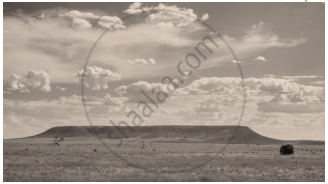Advertisements
Advertisements
Question
Answer the following question.
Give three differences between the Western and the Eastern Himalayas.
Solution
Differences between the Western and the Eastern Himalayas
Western Himalayas
- The Western Himalayas lies to the west of 86°W longitude, between the Indus and the Kali rivers.
- It rises gradually in a series of ranges.
- The average rainfall is less than 100 cm.
- Vegetation is mainly alpine and coniferous.
Eastern Himalayas
- The Eastern Himalayas lies to the east of 88°E longitude, between Tista and Brahma Putra rivers.
- It rises abruptly from the plains of Bihar and West Bengal.
- The average rainfall is more than 200 cm.
- Vegetation is mainly dense evergreen.
APPEARS IN
RELATED QUESTIONS
Briefly explain the geological evolution of the Himalayas.
Give reasons for the following
(i) There is a dense network of railways over the North Indian Plains.
(ii) Peninsular Plateau has a high proportion of metalled roads.
(iii) A good transport network promotes industrial development.
Answer the following question:
The figure below represents a topographic section from the Himalayas to the Peninsular region. Identify any two of the features marked A, B, C, and D.
Name any two standard geological eras, along with their duration.
Mention any two characteristic features of the Peninsular Plateau of India.
Answer the following question:
The figure below represents a section from the Aravalis to the Peninsular region.

Identify any two of the relief features marked, A, B, C, and D.
(i) Where is the New Mangalore Port located?
(ii) What is the chief importance of this port?
The main Standard geological era is ______.
Study the sketch map given below and answer the questions that follow:

- State the direction of the movement of the jetstreams A and B in the Indian region. Give reasons for the same.
- How do the jetstreams A and B influence the Indian climate?
Identify the image given below and explain the formation of this geological division in India.

